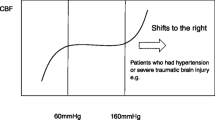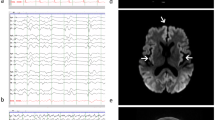Abstract
Hypoxia and arterial hypotension are the most frequent causes of secondary brain damage in head injured patients and contribute significantly to morbidity and mortality (1,2,3). Early ischemia due to a delay in hospital admission is difficult to document and even more difficult to study in humans. However, laboratory studies have recently demonstrated that early secondary hypotension and hypoxia increases both mortality and morbidity following experimental head trauma (4). Yet, it is unclear whether this is the result of a direct effect on the brain or upon peripheral systems of the animal. Therefore, an increased vulnerability of the brain to ischemia or hypoxia following trauma has not been demonstrated to date. An increased vulnerability of the traumatized brain to ischemia may result from a number of factors. First, impairment of the responsiveness of the cerebral circulation as the result of trauma (1,2,5,6) may increase the risk of cerebral ischemia in patients with secondary hypotension and hypoxia. Second, metabolic derangements which result directly from the primary traumatic insult may increase the vulnerability of the brain to hypoxic and ischemic damage. Finally, peripheral reactions to trauma, hemorrhagic hypotension, or apnea may alter the response of the traumatically damaged CNS to hypoxia and ischemia. The present study was undertaken to examine the effect of an early “secondary” ischemic insult upon the function and structure of the traumatized brain. The response of the normal brain to the same level of ischemia was studied for comparison. The purpose of the current study was to test the hypothesis that a traumatic insult renders the CNS more vulnerable to cerebral ischemia.
Access this chapter
Tax calculation will be finalised at checkout
Purchases are for personal use only
Preview
Unable to display preview. Download preview PDF.
Similar content being viewed by others
References
Miller JD, Sweet, RC, Narayan R, Becker DP, Early insults to the injured brain, JAMA 240: 439 (1978).
Langfitt TW, Gennarelli, TA, Can the outcome from head injured be improved? J Neurosurg 56: 19 (1982).
Graham DI, Adams JH, Doyle D, Ischemic brain damage in fatal non-missile head injuries, J Neurol Sci 39: 213 (1978).
Nelson LR, Auen EL, Bourke RS, Barron KD, Malik AB, Crago EJ, Popp AJ, Waldman JB, Kimelberg HK, Foster VV, Creel W, Schuster L, A comparison of animal head injury models developed for treatment modality evaluation, in: “Head injury: basic and clinical aspects”, Grossman RG, Gildenberg PL, eds., Raven Press, New York (1982).
Lewelt W, Jenkins LW, Miller JD, Autoregulation of cerebral blood flow after experimental fluid percussion injury of the brain, J Neurosurg 53: 500 (1980).
DeWitt DS, Jenkins LW, Lutz H, Wei EP, Kontos HA, Miller JD, Becker DP, Regional cerebral blood flow following fluid percussion injury, 10th International Symposium on Cerebral Blood Flow and Metabolism 1 (Suppl. 1): 579 (1981).
Povlishock JT, Becker DP, Miller JD, Jenkins LW, Dietrich WD, The morphopathological substrate of concussion? Acta Neuropathol 47: 1 (1979).
Jenkins LW, Povlishock JT, Lewelt W, Miller JD, Becker DP, The role of post-ischemic recirculation in the development of ischemic neuronal injury following complete cerebral ischemia, Acta Neuropathol 55: 205 (1981).
Siesjö BK, Cell damage in the brain: A speculative synthesis, J Cerebr Blood Flow Metabol 1: 155 (1981).
Rosner MJ, Newsome HH, Becker DP, Mechanical brain injury: The sympathoadrenal response, J Neurosurg 61: 76 (1984).
Author information
Authors and Affiliations
Editor information
Editors and Affiliations
Rights and permissions
Copyright information
© 1986 Plenum Press, New York
About this chapter
Cite this chapter
Jenkins, L.W., Marmarou, A., Lewelt, W., Becker, D.P. (1986). Increased Vulnerability of the Traumatized Brain to Early Ischemia. In: Baethmann, A., Go, K.G., Unterberg, A. (eds) Mechanisms of Secondary Brain Damage. NATO ASI Series, vol 115. Springer, Boston, MA. https://doi.org/10.1007/978-1-4684-5203-7_21
Download citation
DOI: https://doi.org/10.1007/978-1-4684-5203-7_21
Publisher Name: Springer, Boston, MA
Print ISBN: 978-1-4684-5205-1
Online ISBN: 978-1-4684-5203-7
eBook Packages: Springer Book Archive




